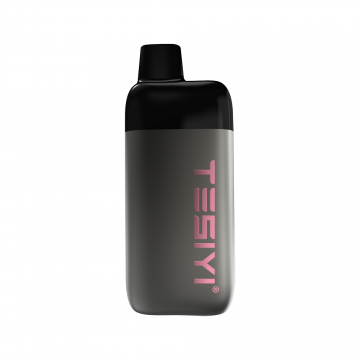Say you’re vaping in your sitting room. You press down on the button, inhale, and exhale. You open your eyes in relaxation and look toward the ceiling—right at a fire alarm. Should you panic?
Many people who vape have been through this same thought process. But unfortunately, there’s no simple answer to the question. Vapes, like people and fire alarms, come in all shapes, sizes, and sensitivity levels.
But there are some baseline things to know about vaping and fire alarms. In what follows, RELX will guide you through everything you need to know about vaping safety and vaping discretion, vis-a-vis fire alarms and smoke detectors.
What Sets Off a Fire Alarm?
Though they’re almost universal within dwellings of all types, the history of fire alarms doesn’t go back too far. It was only in 1890 that Francis Robbins Upton created the first fire alarms for home use. These devices got smaller, more sophisticated, and better at doing their jobs throughout the next century.
Related to the fire alarm was the advent of the smoke detector. Walter Jaeger, a Swiss physicist, accidentally invented this device while trying to create a technology to detect poison gas. Jaeger’s invention was still too expensive for commercial sale, but Duane D. Pearsall and Stanley Bennett Peterson improved on Jaeger’s invention in 1965, creating the first smoke detectors for residential application.
These breakthroughs have saved countless homeowners from fire breaking out in their houses. But the technological innovations do pose some drawbacks.
Now that these devices have become so sensitive, it’s not just smoke and flames that trigger them. It could be smoke or vapor from any number of things.
As a vape user, how worried do you need to be?
Understanding what can trigger a fire alarm is the first step to knowing how to vape around them.
Fire
The most common cause for setting off fire alarms is, naturally, fire. Most alarms use a process called ionization to detect smoke.
Fire alarms house a system in which air passes through a chamber that contains a small amount of radioactive material. When smoke enters the system, it disrupts the flow of ions and activates the alarm.
Fire isn’t the only source of smoke that can disrupt the ionization process, however.
Smoke from Cooking
According to Northern Ireland Direct, the leading causes of home fires are cooking and cooking appliances. But even before a cooking fire, cooking can activate the alarm.
Just that column of smoke coming off chicken or mushrooms cooking at high heat can trigger a smoke alarm.
Insect Interference
One of the strangest reasons fire alarms get activated is because of bugs. All smoke detectors have small vents through which the smoke passes. Those vents are also attractive to flying bugs, who like to burrow.
Sometimes, bugs get inside the alarms and mess with the wiring, causing the alarm to sound.
High Concentrations of Moisture/Humidity
Most people don’t place smoke detectors in bathrooms. The reason for that is the moisture buildup in rooms with appliances like showers.
If too much humidity or condensation builds up in a room, it may trigger a smoke detector.
Too Much Dust
It’s not just smoke and vapor that can act as triggers. A kickup of a concentrated amount of dust can also set off inaccurate readings.
Dust consists of a fine, silt-like powder. It’s so fine that if ventilated into a fire alarm, it can resemble smoke and trigger the alarm.
The risk of accidental alarm triggering is perhaps one more reason to keep up on your spring cleaning.
Chemicals in the Air
Chemicals in the air are another thing to be careful of if your smoke detector is installed in your kitchen. A circulation of too much chemical product in the air can trigger a fire alarm.
Can a Vape Set off a Fire Alarm?
The answer is yes, but the likelihood is rare. You have to be vaping pretty close to a fire alarm and exhaling quite vigorously to set off the device.
Reports of fire alarms going off from vapor are scant because the vapor dissipates much faster than smoke. But it does happen.
The good news is that there are proactive measures you can take to mitigate the risk of accidental alarm triggering.






